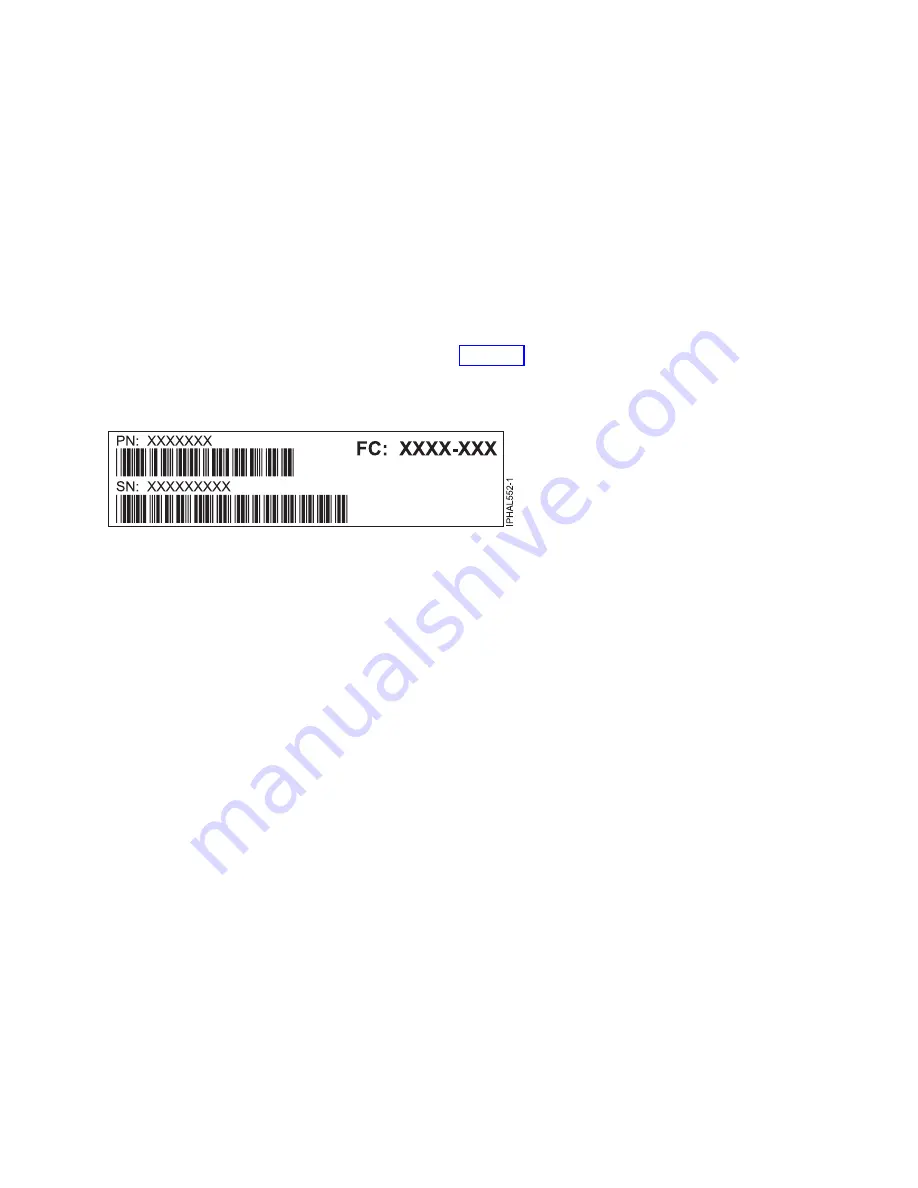
Note:
When you have drive slots available in a system, enclosure, or expansion unit, fill the slot
positions in the system first. However, you can choose a different disk drive or solid-state drive
placement that depends on your data protection strategy.
3.
Record the physical location where the new disk drive or solid-state drive can be installed.
a.
The physical location has the following form:
U787A.001.AAAXXXX-P2-D3
where
P2-D3
is the
position of the disk drive or solid-state drive in the system, drive enclosure, or an expansion unit.
Find the
U787A.001.AAAXXXX
location information from the control panel display on the system,
drive enclosure, or an expansion unit.
b.
In this example,
U787A.001.AAAXXXX-P2-D3
, U787A.001 comes from the feature code (FC) on the
label, AAAXXXX comes from the last 7 digits of the sequence number (SN or SEQ) on the label,
and P2-D3 is the slot where you are installing the disk drive or solid-state drive.
c.
If you cannot find the location information from the control panel, find the feature code (FC) and
sequence number (SN or SEQ) on the label that is shown on the front of the system, drive
enclosure, or an expansion unit, as shown in Figure 20. In the example,
U5074.001.AAAXXXX-DB3-
D32
, you would install a disk drive or solid-state drive in the expansion unit with type 5074,
model 001, sequence number AAAXXXX, and disk drive or solid-state drive position DB3–D32.
4.
To identify the available slot by using the Hardware Service Manager (HSM), complete the following
steps:
a.
Sign on to service level authority.
b.
Type
strsst
in the command line of the IBM i session and then press
Enter
.
c.
Type your service tools user ID and service tools password in the Start Service Tools Sign On
display, and then press
Enter
.
Note:
The service tools password is case-sensitive.
d.
Select Start a service tool from the System Service Tools (SST) display, and then press
Enter
.
e.
Select Hardware service manager from the Start a Service Tool display, and then press
Enter
.
f.
If the slot you want to use contains a disk drive filler, remove the disk drive filler.
g.
Select Device Concurrent Maintenance from the Hardware Service Manager display, and then
press
Enter
.
The Device Concurrent Maintenance is displayed, as shown in the following figure.
Figure 20. Example of a system or an expansion unit label
Disk drives or solid-state drives
23
Summary of Contents for Power System 5148-22L
Page 2: ......
Page 18: ...xvi Disk drives or solid state drives...
Page 202: ...184 Disk drives or solid state drives...
Page 203: ......
Page 204: ...IBM...
















































